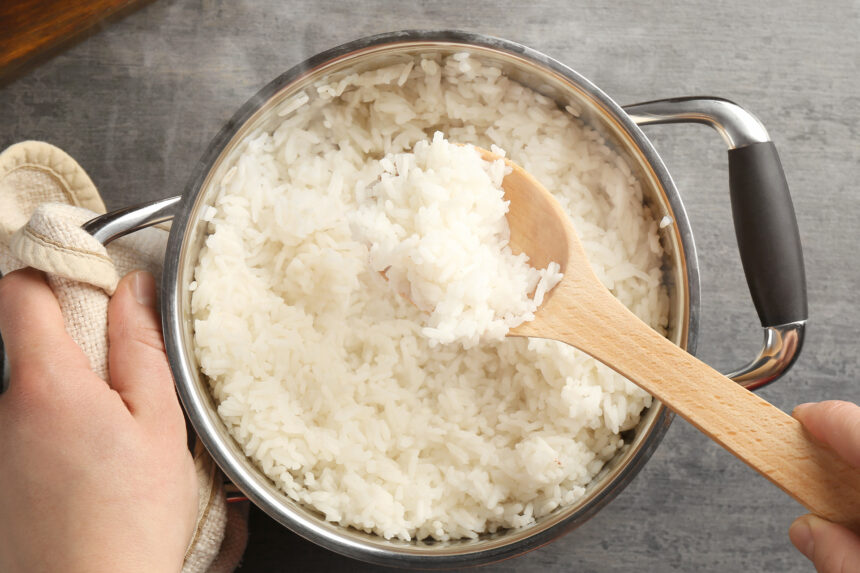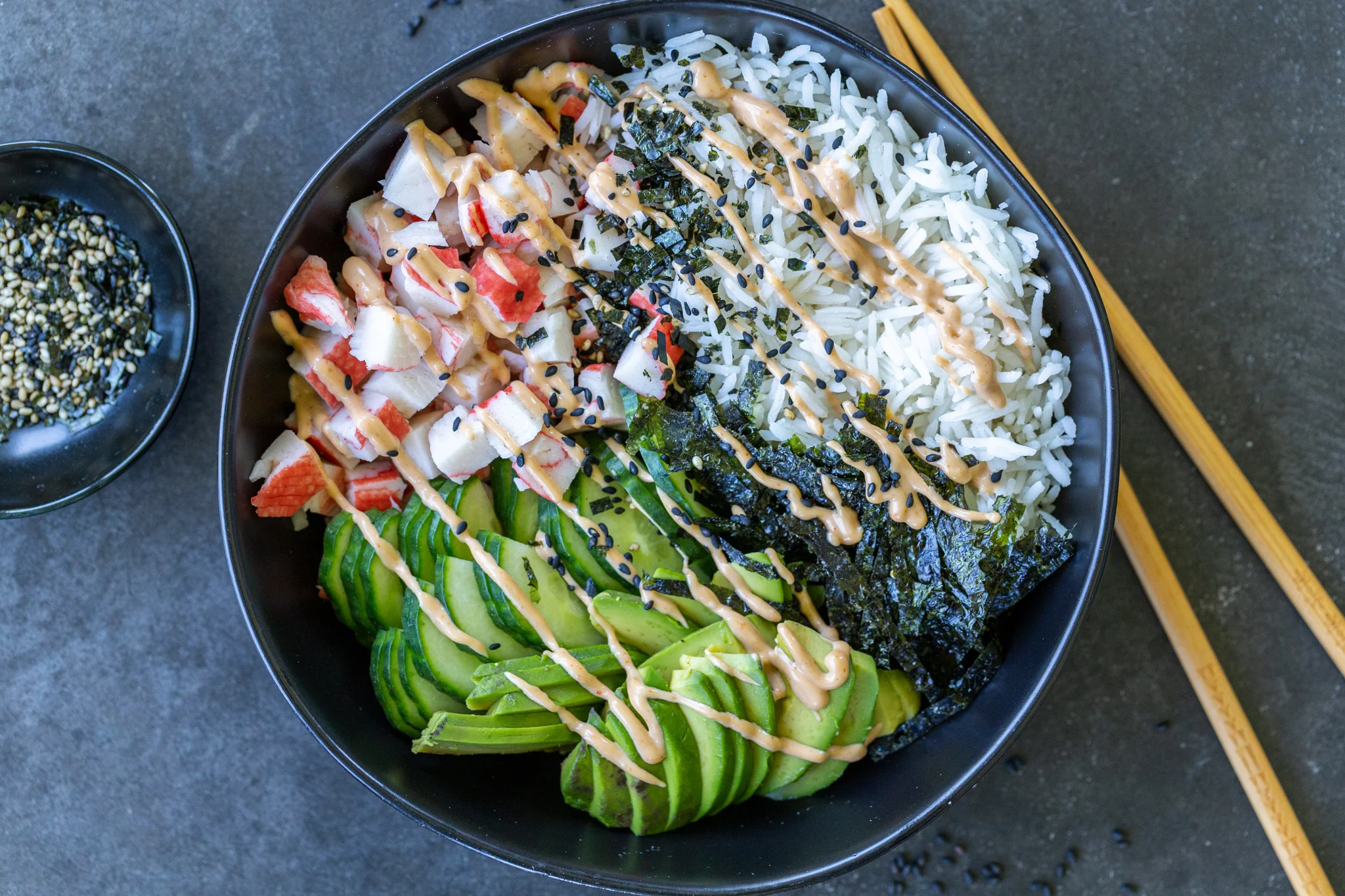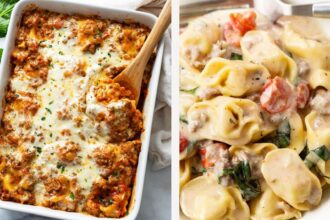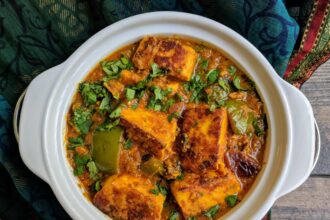Cooking rice without a rice cooker may sound difficult, especially if you’re new to cooking. But the truth is, you can make soft, fluffy, delicious rice right on your stovetop with just a pot, some water, and a little patience. This beginner-friendly guide will show you exactly how to cook rice without a cooker, step by step, using simple instructions that anyone can follow. Whether you are a student, a beginner cook, or just someone who doesn’t own a rice cooker, this method will help you get perfect results every single time.
- Why Learn How to Cook Rice Without a Cooker
- Ingredients You Need to Cook Rice on the Stove
- Important Tips Before You Start Cooking
- Step-by-Step Guide: How to Cook Rice Without a Cooker
- Common Mistakes Beginners Make and How to Avoid Them
- Variations: How to Add Extra Flavor to Your Rice
- What to Serve with Your Homemade Rice
- FAQs About Cooking Rice Without a Cooker
- Final Thoughts
This guide works for most types of rice, including white rice, basmati rice, jasmine rice, and even brown rice with small adjustments in water and cooking time. If you love easy cooking tutorials like this, you can find more beginner recipes and kitchen tips on myfirstrecipe.com.
Why Learn How to Cook Rice Without a Cooker
Not everyone has a rice cooker at home, but almost everyone has a pot and a stove. Learning how to cook rice the traditional way gives you control over texture, softness, and flavor. It also helps you become a better home cook overall.
This method is helpful if your rice cooker breaks, you’re traveling, you live in a dorm, or you simply want to save space in your kitchen. Knowing the basic stovetop method also helps you understand rice better, which will improve many other recipes like fried rice, rice bowls, soups, and stir-fries.
Ingredients You Need to Cook Rice on the Stove
To cook rice without a cooker, you only need three basic ingredients:
• Rice
• Water
• Salt (optional)
You can also add a teaspoon of oil or butter if you want extra flavor or want to keep the grains separate, but this is completely optional.
Important Tips Before You Start Cooking
Before you begin, it helps to understand a few simple but important tips:
Rice should always be rinsed before cooking unless the package says otherwise. This removes excess starch and keeps the rice from becoming sticky.
Use the correct water-to-rice ratio. This is the most important step. Most white rice needs 1:2 (one cup of rice to two cups of water). Basmati rice may need slightly less water. Brown rice needs more water and a longer cooking time.
Do not stir rice while it is cooking. Stirring breaks the grains and makes rice mushy.
Let the rice rest after cooking. Resting helps the rice finish steaming and improves texture.
Once you remember these tips, cooking rice becomes much easier.
Step-by-Step Guide: How to Cook Rice Without a Cooker
This is the simplest stovetop method to cook perfect rice every time, even for total beginners.
Step 1: Measure Your Rice
Start by deciding how much rice you want to cook. One cup of uncooked rice makes about two to three cups of cooked rice, which is enough for two people. For a family, you can cook two cups or more.
Step 2: Rinse the Rice Properly
Place your rice in a bowl and fill it with water. Swirl the rice with your fingers and drain the cloudy water. Repeat this two to three times until the water looks clearer. This step helps remove surface starch and keeps your rice fluffy.
Step 3: Add Water Using the Right Ratio
Pour the washed rice into a pot. Add water based on the type of rice you are cooking:
White rice: 1 cup rice + 2 cups water
Basmati rice: 1 cup rice + 1.5 to 1.75 cups water
Brown rice: 1 cup rice + 2.5 to 3 cups water
Jasmine rice: 1 cup rice + 1.75 cups water
If you want softer rice, add a little extra water. If you want firmer rice, add a little less.
Step 4: Add Salt or Oil (Optional)
You can add a small pinch of salt for taste. You may also add a teaspoon of oil or butter to enhance flavor and prevent sticking. This is optional and depends on your preference.
Step 5: Bring the Water to a Boil
Place the pot on the stove and turn the heat to medium-high. Let the water come to a gentle boil. Do not cover the pot at this stage. Once it starts boiling, reduce the heat to low.
Step 6: Cover the Pot and Let It Cook
As soon as the water boils, place a lid on the pot. Turn the heat down as low as possible. The rice needs to steam slowly. Cook without opening the lid for:
White rice: 15 minutes
Basmati rice: 12–15 minutes
Brown rice: 35–40 minutes
Jasmine rice: 15 minutes
Try not to open the lid during cooking because steam is important for texture.
Step 7: Turn Off the Heat and Let the Rice Rest
Once the cooking time is complete, turn off the heat but do not remove the lid. Let the rice rest for 10 minutes. This step allows the rice to finish steaming and helps remove extra moisture.
Step 8: Fluff the Rice Gently
After resting, open the lid and use a fork to gently fluff the rice. Avoid stirring with a spoon because it can break the grains. Your rice should now be soft, fluffy, and ready to serve.
Common Mistakes Beginners Make and How to Avoid Them
Many beginners face the same problems when cooking rice without a cooker. These are the most common mistakes and how to fix them:
Too much water: This makes the rice mushy and sticky. Always measure water correctly.
Lifting the lid too often: Opening the lid releases steam. Try to keep it closed until the rice is fully cooked.
Cooking on high heat: Rice needs slow cooking. High heat burns the bottom and leaves the top undercooked.
Not rinsing rice: This makes the rice sticky and clumpy.
Forgetting to rest the rice: Resting is key for good texture.
If you follow the steps shared above, you will be able to avoid these issues easily.
Variations: How to Add Extra Flavor to Your Rice
Once you learn the basic technique, you can try these simple variations to make your rice even more tasty:
Cook rice in vegetable or chicken broth instead of water for extra flavor.
Add a bay leaf or cardamom pod for fragrance.
Mix a teaspoon of butter or olive oil after cooking.
Add peas, sweet corn, or chopped vegetables for a simple one-pot meal.
These small changes can turn plain rice into something more delicious while keeping the cooking method the same.
What to Serve with Your Homemade Rice
Rice is one of the most versatile foods in the world. It goes with almost everything. Here are a few easy dishes you can pair it with:
Stir-fried vegetables
Simple chicken curry
Egg curry
Beans or lentil soup
Fried rice
Stir-fried tofu
Grilled fish
If you want more beginner-friendly recipes like these, you can explore simple meal ideas on myfirstrecipe.com for inspiration.
FAQs About Cooking Rice Without a Cooker
Can I cook rice without soaking it?
Yes, you can. Soaking is helpful for basmati and brown rice because it reduces cooking time, but it is not required for basic white rice.
Why does my rice turn sticky?
Sticky rice usually happens when you use too much water or do not rinse the rice properly. Make sure to use the correct ratio.
What if my rice is undercooked?
Add a small splash of water, cover the pot again, and cook on low heat for another 5 minutes.
How do I store leftover cooked rice?
Let the rice cool fully, then store it in an airtight container in the refrigerator. Eat it within 24 hours for best freshness and safety.
Can I reheat cooked rice?
Yes. Sprinkle some water on the rice before reheating in the microwave or on the stove to keep it soft.
Final Thoughts
Cooking rice without a cooker is simple once you understand the basics. With the right water ratio, proper rinsing, gentle heat, and enough resting time, anyone can make delicious rice on the stovetop. This skill is useful for all beginner cooks and helps you make easy meals at home without special equipment. For more simple cooking guides and beginner recipes, you can visit myfirstrecipe.com and explore helpful step-by-step tutorials.




